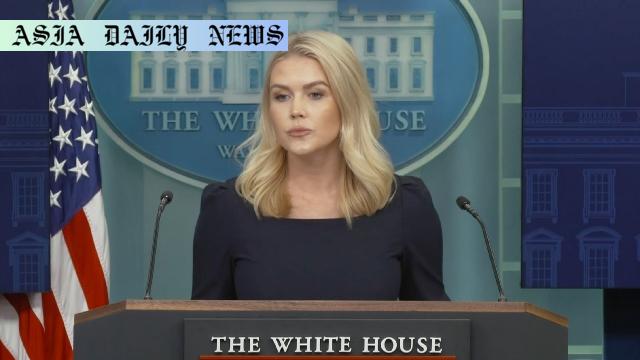Trade Deals – US officials are considering more than 15 trade proposal negotiations, with President Trump expressing a strong willingness to sign deals.

Introduction: US Trade Negotiations Take Center Stage
The administration of US President Donald Trump is shifting its focus towards reinvigorating global trade relations by actively considering over 15 detailed trade deal proposals. This initiative showcases a strategic pivot that seeks to strengthen economic ties with nations worldwide. White House Press Secretary Karoline Leavitt has confirmed these developments, emphasizing the overwhelming outreach from over 75 countries to partake in constructive trade partnerships.
Expanding Trade Discussions With Global Partners
Leavitt’s remarks indicate that the Trump administration is preparing for extensive negotiations to finalize agreements that bear long-term economic significance. With over 75 countries expressing interest in trade talks, the scope of these proposals spans across critical industries such as technology, agriculture, and manufacturing. The emphasis placed by the White House showcases a determined mindset to recalibrate global trade practices and foster stability in an increasingly interconnected economy. It is worth noting that Trump himself has expressed a willingness to personally assist in streamlining and signing these agreements.
US-China Trade Relations: A Tenuous Path Forward
A significant focus of these negotiations lies in the longstanding tensions between the United States and China. Leavitt has reiterated that while Trump is willing to negotiate with Beijing, the administration expects China to demonstrate an initiative in reestablishing trust and cooperation. Trump’s tariffs have pressured both nations to reconsider their trade practices, and any potential resolution may depend on China’s strategic response. As Leavitt articulates, “The ball is in China’s court,” leaving the possibility of renewed economic ties in the hands of Chinese policymakers.
Domestic Ramifications of Trade Policies
While the global outreach for trade agreements brings considerable opportunities, the domestic ramifications of Trump’s tariffs are becoming harder to ignore. Small businesses in sectors such as wine imports and fishing equipment retail have begun legal challenges, arguing that unilateral tariff impositions disrupt economic balance and threaten livelihoods. The lawsuit filed with the US Court of International Trade seeks to challenge the legality of these tariffs and assert a more structured approach to policy-making. Balancing global negotiations with domestic industry needs remains a critical challenge for the administration.
Conclusion: The Road Ahead for US Trade Policies
As the Trump administration navigates these intricate trade discussions, the stakes remain high. The potential agreements with dozens of countries could reshape the US economy through strategic partnerships and improved market access. However, achieving equilibrium between international strategies and domestic realities is crucial for lasting economic resilience. It is clear that these negotiations are more than just economic exercises; they are a testament to America’s evolving role in global commerce and its determination to influence fairer and more inclusive trade practices.
Commentary
The Significance of Optimizing Trade Relations
The developing narrative surrounding the US administration’s ambitious trade deal proposals reflects a broader understanding of how essential global economic integration is to modern prosperity. President Trump’s focus on initiating discussions with over 75 countries marks a pivotal moment in showcasing America’s reach and influence in global commerce. While there is significant optimism about these deals, it is equally crucial to understand the complexities that such negotiations entail.
A Closer Look at Domestic Trade Challenges
On the domestic front, the tariffs imposed under the Trump administration have sparked debate. While they aim to shield certain industries and address unfair practices, they inadvertently create challenges for smaller businesses navigating these changes. The livelihood of business owners in wine importing, fishing equipment, and other sectors underlines the importance of balancing protective measures with accessibility and affordability for consumers.
A Global Vision Balanced With Pragmatism
From a broader perspective, the commentary points towards the interdependency of economies worldwide. Crafting agreements with over 15 global partners requires not only skillful negotiation but also a nuanced stance that takes cultural, economic, and political factors of partner nations into account. Furthermore, seeking a resolution with China—one of the world’s largest economies and trading powers—is a multifaceted challenge that could influence the trajectory of global trade for years.
Conclusion: Striking the Right Balance
In conclusion, while the potential for expanding trade partnerships is immense, achieving success also carries the weight of responsibility. The United States stands at a crossroads, where its policies and strategies could redefine its global economic role. However, lasting success will only be possible through transparency, respect for domestic concerns, and a commitment to fostering collaborative international relationships.


